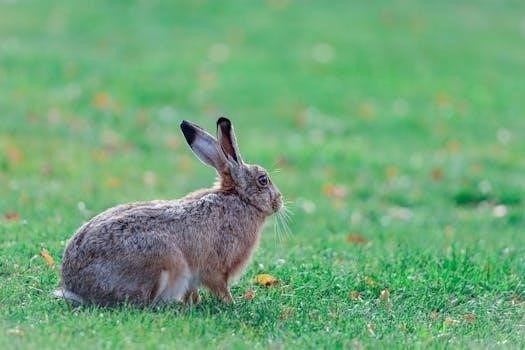Animal Kingdom Map 2024 PDF⁚ An Overview
Unleash your wild side with Disney’s Animal Kingdom Theme Park Map! Discover hidden spots, main attractions, and detailed offerings of each land, all easily accessible in a convenient PDF format for planning your adventure․
Global Livestock Distribution Maps (GLW)
FAO’s Gridded Livestock of the World (GLW) provides peer-reviewed spatial data on livestock distribution and abundance․ These maps support food security, economic growth, and environmental studies, offering valuable insights for planning and research initiatives․
FAO’s Gridded Livestock of the World (GLW)
The Food and Agriculture Organization (FAO) initiated the Gridded Livestock of the World (GLW) project, publishing its first global livestock distribution maps in 2007․ GLW, currently in its fourth version, is a peer-reviewed spatial dataset detailing the global distribution and abundance of various livestock species․ These data are invaluable in addressing challenges related to food and nutrition security, fostering livelihoods and economic growth, safeguarding human and animal health and welfare, and managing natural resources and the environment․ With estimated standing populations of 1․43 billion cattle, 1․87 billion sheep and goats, 0․98 billion pigs, and 19․60 billion chickens, GLW provides reliable and comprehensive data for a wide range of applications․ The GLW data supports informed decision-making in diverse sectors, contributing to sustainable development and improved resource management․

Species Distribution Mapping Initiatives
Various initiatives, including USGS and GAP, focus on creating species range and distribution maps using the best available data for assessing conservation status and planning efforts․
USGS Habitat Distribution Maps
The USGS offers a valuable resource⁚ habitat distribution maps for terrestrial vertebrate species in the conterminous United States․ These maps provide crucial information for understanding where different animal species live, which is essential for conservation efforts and land management decisions․ The data is invaluable for researchers, conservationists, and policymakers alike․
Habitat loss is a significant threat to many species, making accurate habitat maps vital․ These maps from the USGS help identify critical areas for protection and restoration․ By understanding species’ ranges, we can better manage human activities to minimize their impact on wildlife and ensure the long-term survival of these animals in their natural environments․
GAP Species Range and Distribution Maps
GAP provides species range and distribution maps for over 2,000 species within the continental US, Alaska, Hawaii, and Puerto Rico․ Their goal is to create maps and models with the best available data for conservation assessments․ These resources are essential for conservation planning, enabling informed decisions about land use and habitat management;
The maps help identify areas where species are most vulnerable and where conservation efforts are most needed․ By understanding species’ ranges, we can better protect their habitats and ensure their long-term survival․ These maps are a valuable tool for anyone working to conserve biodiversity․

Animal Distribution and Conservation
Understanding animal distribution is crucial for effective conservation․ Resources like the IUCN Red List and endangered species maps aid project planning and protect vulnerable species and their habitats․
IUCN Red List of Threatened Species
Established in 1964, the IUCN Red List of Threatened Species stands as the world’s most comprehensive information source on the global conservation status of animal, fungi, and plant species․ This extensive database provides critical data on species’ population sizes, distribution, habitat, and threats․ It serves as a vital tool for scientists, conservationists, and policymakers in assessing extinction risks and prioritizing conservation efforts․ The Red List’s assessments are based on rigorous scientific criteria, ensuring a standardized and objective evaluation of each species’ vulnerability․ Regular updates and revisions reflect the dynamic nature of conservation challenges and provide the most current information available․ The IUCN Red List is an indispensable resource for understanding and addressing biodiversity loss globally, guiding conservation actions and informing policy decisions to protect threatened species and their habitats․ Its ongoing efforts are crucial for safeguarding the planet’s rich biodiversity for future generations, with data informing conservation strategies worldwide․
Endangered Species Mapping for Project Planning
Endangered species maps are essential for identifying species of concern that may be at risk from your project site, ensuring responsible and sustainable development․ Utilize tools like Transect to effectively locate and map all specific species of concern relevant to your project’s location, enabling informed decision-making․ These maps help in assessing potential impacts on vulnerable species and their habitats, guiding mitigation strategies to minimize harm․ By integrating endangered species data into project planning, you can proactively avoid conflicts with protected wildlife and comply with environmental regulations․ Access to accurate and up-to-date mapping resources is crucial for effective conservation planning and responsible land management․ Understanding the distribution of endangered species allows for the implementation of targeted conservation measures, promoting biodiversity and ecosystem health․ Incorporating this information early in the project lifecycle fosters environmental stewardship and minimizes potential legal and reputational risks associated with impacting endangered species․ This ensures that development projects are environmentally sound and contribute to the long-term preservation of biodiversity․

Disney’s Animal Kingdom Map 2024
Consult the recent Disney’s Animal Kingdom map to plot your course! This wayfinding tool helps you plan the perfect Walt Disney World vacation and navigate the park effectively․
Park Navigation and Key Attractions
Exploring Disney’s Animal Kingdom in 2024 requires a good map! Utilize the park’s navigation tools to discover key attractions and hidden spots․ From the Tree of Life to Pandora – The World of Avatar, planning is essential․ The map details offerings of each land, aiding in efficient exploration․
Find iconic rides like Expedition Everest and Kilimanjaro Safaris with ease․ Don’t miss the secluded Koi Pond near Sky Garden or Otter Feeding Time․ An Animal Kingdom map helps maximize your adventure, showing restaurants, restrooms, and entertainment․
Use the map to minimize walking and make the most of your time․ Insider tip⁚ Visit the Tree of Life at dusk for a magical surprise! A well-planned route ensures a memorable experience․
Online Resources for Animal Distribution Data
Access a wealth of animal distribution data through online resources like the National Biodiversity Data Centre and species distribution dashboards․ Explore interactive maps and online layers for comprehensive insights;
National Biodiversity Data Centre Mapping System
The National Biodiversity Data Centre’s mapping system, also known as Biodiversity Maps, provides an integrated platform for exploring both terrestrial and marine data․ This comprehensive system is specifically designed to map the distribution of various species, offering valuable insights for conservation efforts and ecological research․ The system aims to consolidate available data into a user-friendly interface, enabling users to visualize and analyze species distribution patterns effectively․
This integration facilitates a more holistic understanding of biodiversity, considering both land-based and aquatic ecosystems․ By mapping species occurrences, the center supports informed decision-making in conservation planning and management․ The interactive nature of the system allows for dynamic exploration of biodiversity data, contributing to increased awareness and knowledge sharing among researchers, policymakers, and the public․ The platform serves as a crucial tool for monitoring and protecting Ireland’s natural heritage․
Species Distribution Dashboards and Online Layers
Species distribution dashboards offer interactive platforms for visualizing and analyzing species occurrences․ These dashboards provide essential tools for conservation planning and ecological research by integrating data from multiple sources into accessible online layers․ The dashboards often include features for exploring species distributions across geographical regions and time periods․
These resources enhance the understanding of species ranges, habitat preferences, and potential impacts of environmental changes․ Online layers allow for overlaying species distribution data with other relevant information, such as climate data or land use maps․ Such integration supports informed decision-making in conservation efforts․ Dashboards and online layers are valuable resources for researchers, conservationists, and policymakers seeking to assess and protect biodiversity․ They promote data-driven approaches to conservation by providing accessible and dynamic visualizations of species distribution patterns․
Livestock Distribution and Food Security
Livestock distribution plays a vital role in global food security, directly contributing to the livelihoods of nearly a billion people․ Modeling their climatic range helps in understanding sustainable practices․ With substantial populations of cattle, sheep, goats, pigs, and chickens, reliable data on livestock distribution is essential․ These data find applications in food security, livelihoods, and human and animal health sectors․
Understanding where livestock is concentrated and how regional habits influence animal husbandry helps ensure sustainable production․ Analyzing livestock distribution aids in addressing challenges related to climate change and resource management․ Accurate maps and data are crucial for effective policy-making and planning․ This ensures that livestock continues to support food security and livelihoods worldwide․
Recent Animal Species Discoveries in 2024
Despite extensive research, new animal species continue to be discovered each year, with 2024 being no exception․ These discoveries highlight the vast biodiversity still unknown to science and underscore the importance of continued exploration․ Unveiling new species enhances our understanding of the natural world․
Each discovery contributes valuable data to the scientific community․ Documenting these new species is crucial for conservation efforts․ These findings contribute to our knowledge of evolutionary biology and ecological relationships․ Mapping their distribution becomes essential for understanding their habitat needs․ Continued exploration reveals the hidden wonders of the animal kingdom․

Pet Market Trends and Animal Data
The US pet market showcases continuous growth, encompassing pet food, supplies, services, and veterinary care․ Understanding pet market trends requires analyzing comprehensive animal data including ownership patterns, retail sales, and e-commerce activity․ Shifts in consumer preferences influence the demand for specific pet products and services․
Veterinary services represent a significant portion of the market, reflecting the increasing focus on animal health and well-being․ The pet food and treats segment remains a dominant force, driven by premiumization and specialized diets․ Pet services, such as grooming and boarding, also experience consistent expansion․ Analyzing this data helps businesses adapt to evolving consumer needs․




